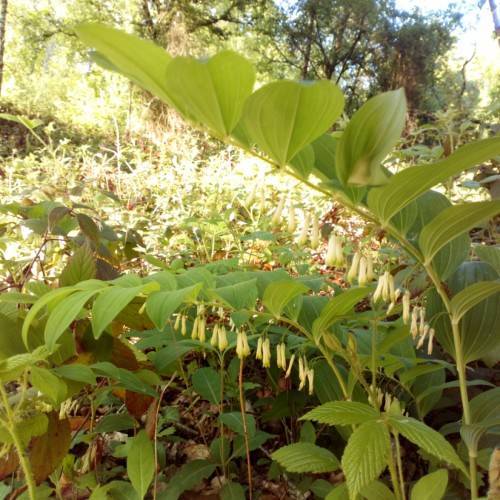
giant Solomon's seal
Polygonatum biflorum var. commutatum
Cycle:
Herbaceous Perennial
Watering:
Frequent
Hardiness Zone:
3 - 8
Flowers:
Flowers In Spring
Sun:
Deep shade, Filtered shade, Part sun/part shade
Fruits:
Fruits In Summer Ready In
Leaf:
Yes
Growth Rate:
High
Maintenance:
Low
Care Level:
Medium
watering
Giant Solomon's seal (Polygonatum biflorum var. commutatum) should be watered when the top 1-2 inches of soil becomes slightly dry, until the top layer is damp. The amount of water needed will vary depending on an individual plant's soil type and exposure, but it is important to water thoroughly, so that most of the soil in the pot is damp. Aim for 1-2 inches of water per week, but you may need to adjust this amount based on your plant's individual needs. Additionally, it is important to water at the base of the plant and not from above the foliage to help discourage disease development.
sunlight
Giant Solomon's seal (Polygonatum biflorum var. commutatum) is a shade-loving woodland plant native to North America. The plant grows best in partial shade, with filtered sunlight for most of the day. It prefers bright, indirect light, with some shade from trees or structures during the hottest part of the day. Full sun is too intense and will cause the leaves to sunburn. However, too little light will cause the plants to become lanky and floppy. The ideal amount of sunlight for this plant species is 5 to 6 hours a day.
pruning
Giant Solomon's Seal (Polygonatum biflorum var. commutatum) should be pruned annually in late winter or early spring. Pruning should be minimal and used only to shape the plant, as light pruning will help to maintain an even shape throughout the growing season. Remove any dead, damaged, or crossing branches to prevent them from interfering with healthy growth. Pruning can also promote bushier, fuller plants, but be careful not to cut back too much or the plant will not flower. Wait until the biggest flush of blooms appear and then cut back any types to the desired size.
